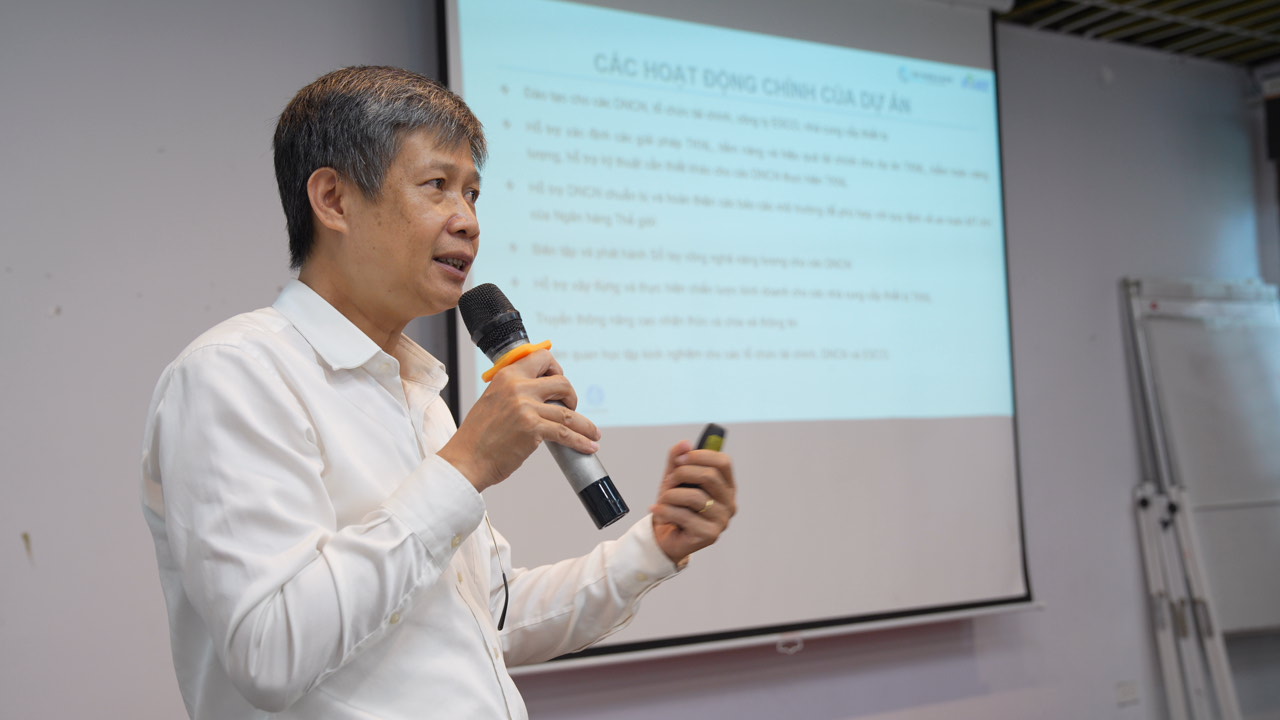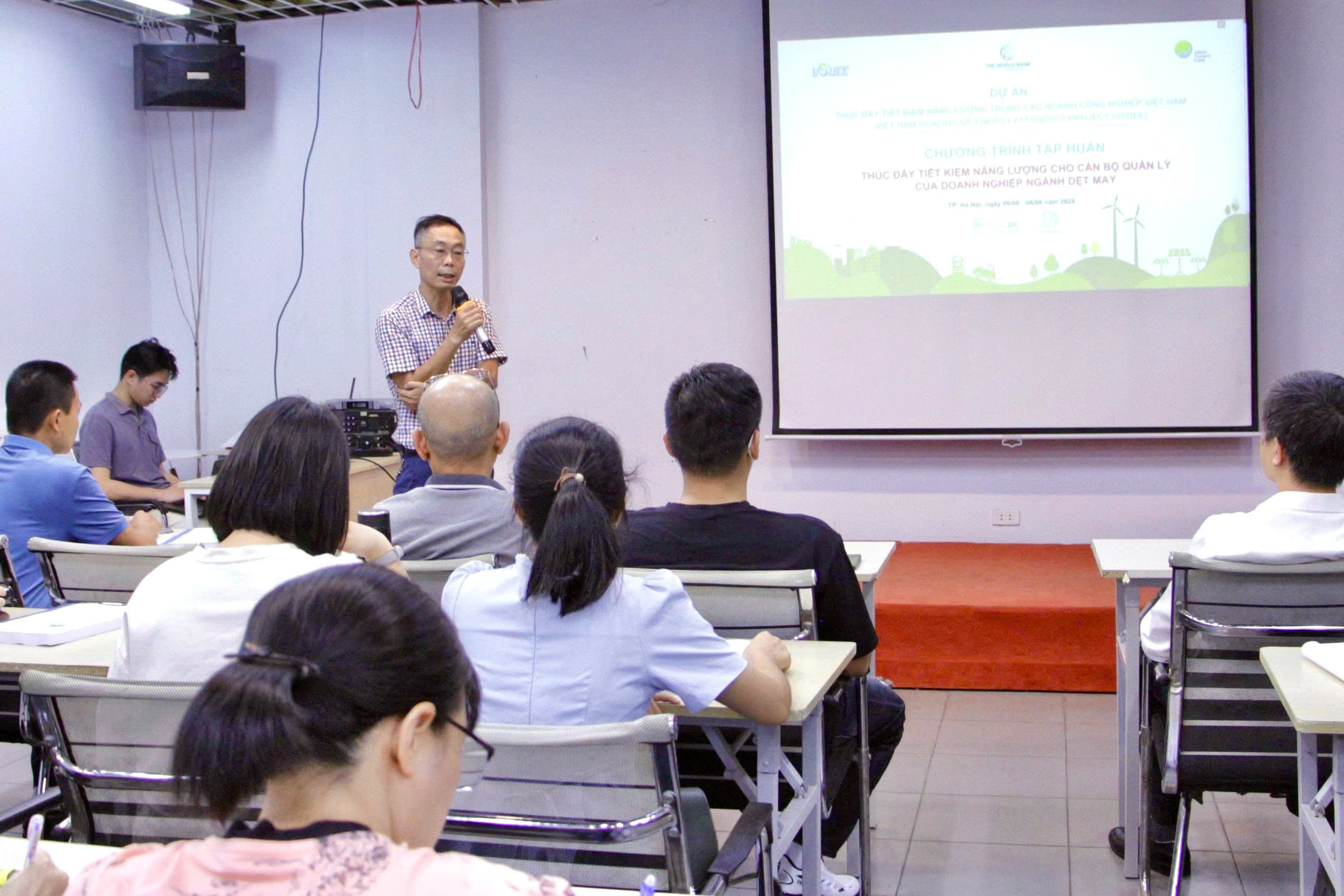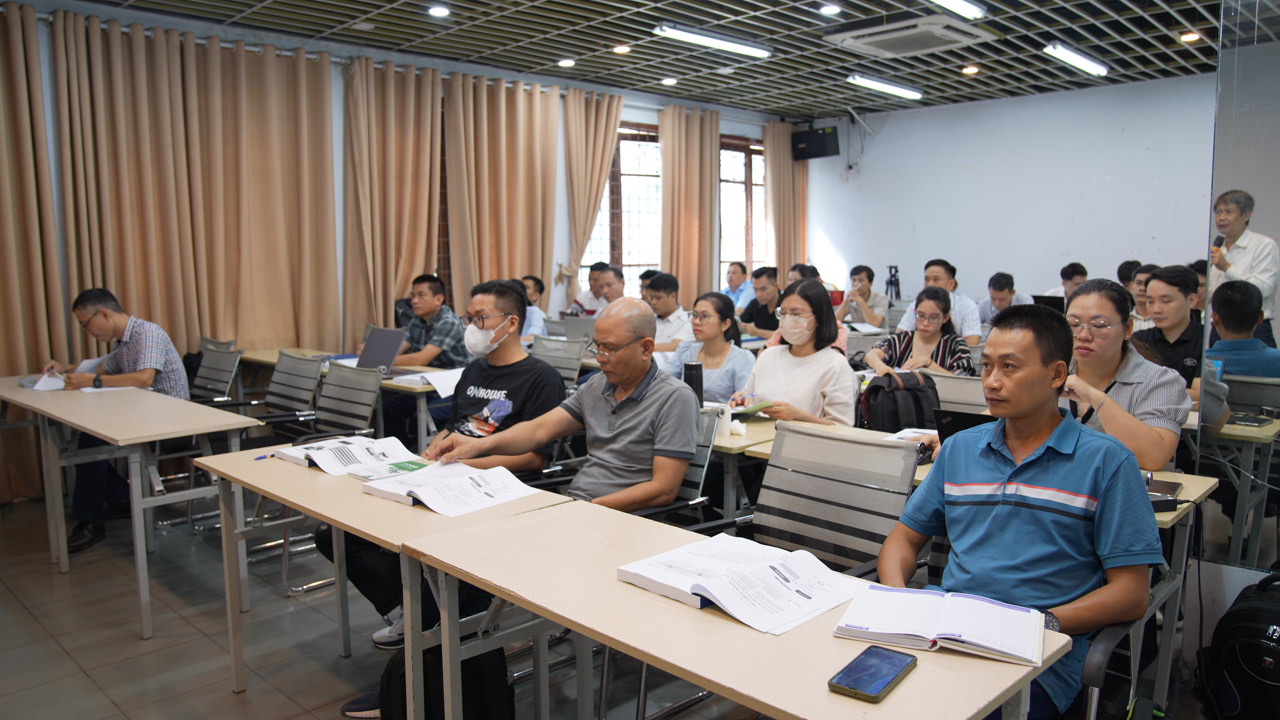From August 5 to 8, 2025, a capacity-building training course on energy management for enterprise managers in the textile and garment sector was held in Hanoi. This activity is part of the “Vietnam Scaling Up Energy Efficiency Project” (VSUEE), which is implemented by the Ministry of Industry and Trade and supported by the World Bank.
The course was designed with an in-depth focus on energy management content tailored to the production characteristics of the textile and garment industry — one of the most energy-intensive sectors, with many stages such as spinning, weaving, dyeing, finishing, and garment manufacturing.
Mr. Hoang Duong Thanh, Technical Expert of the VSUEE Project Management Board, introduced the training courses.
Energy Efficiency Potential in the Textile Industry
The textile and garment industry is one of Vietnam’s key industries, contributing about 12% of the industrial GDP and 5% of the country’s total GDP. However, its rapid development comes with high energy consumption. Currently, energy accounts for around 8–10% of total production costs across the industry and can reach 20–25% in energy-intensive processes such as dyeing and washing. Major production stages like spinning, dyeing, finishing, and sewing require substantial electricity, steam, and fossil fuels to operate machinery, conduct thermal processing, and transport materials.
In practice, the average electricity consumption of a dyeing plant ranges from 0.2–0.4 kWh/kg of fabric, and around 80–100 kg of steam is needed per ton of fabric. Despite its high energy-saving potential, many businesses in the sector continue to use outdated equipment and technologies, resulting in low efficiency and high emissions. The high initial investment cost for energy-saving technology remains a major barrier, while energy awareness and management systems in many enterprises are still underdeveloped.

Mr. Mai Van Huyen, Director of the Green Development Centre (Training Courses Implementation Unit), shared policies related to energy efficiency and conservation in Vietnam.
Solutions for Effective and Conservative Energy Use
Given the high but inefficient energy consumption, the textile and garment industry must find new directions to reduce operational costs, meet export market demands, and move toward sustainable development. In this context, implementing energy efficiency solutions is no longer optional but an urgent requirement — especially in electricity-intensive processes such as dyeing, finishing, or equipment operation.
The training program focused on analyzing specialized technological solutions tailored for the textile and garment industry, including:
Firstly, improving energy management and operations capacity by enhancing staff training on energy efficiency and establishing Energy Management Systems (EMS) within enterprises.
Secondly, mobilizing appropriate financial resources, including participation in financial support programs, particularly through Energy Service Company (ESCO) models, to implement effective and sustainable investment solutions.
Thirdly, production improvements and efficient equipment use by applying energy-efficient machinery, utilizing natural lighting in workshops, and installing automatic sensors to optimize electricity usage.
Attending the training course are energy managers of textile industrial enterprises.
Fourthly, efficient use of raw materials through supply chain assessments to minimize material waste, selecting appropriate materials, and applying optimized cutting and sewing techniques.
Fifthly, digital and automation technology applications, including real-time energy consumption management, using data and sensors for precise operations monitoring and production line optimization.
Sixthly, training and upskilling workers, combined with improvement models like 5S and Kaizen to build energy-saving work habits.
Seventhly, reducing emissions and saving water in dyeing and washing processes, by applying low- or zero-water dyeing methods, reusing treated water, controlling chemicals, and using environmentally friendly dyes. At the same time, selecting appropriate input materials, eliminating high-emission products, and prioritizing eco-friendly products to meet export market requirements.
The training course is a forum to share knowledge and practical experience between experts and enterprises.
Beyond technical knowledge, the program served as a forum for trainees, experts, and businesses to share practical experiences and identify suitable approaches for different production models.
In the global trend toward sustainable development, energy is no longer just a cost factor but a key criterion reflecting a company’s competitiveness and ability to meet international requirements. Enhancing energy efficiency is a practical step to help the textile and garment industry transition toward modernization, green production processes, and better compliance with environmental and social responsibility standards in the global supply chain.
| As major export markets such as the U.S., EU, and Japan tighten environmental and CO2 emission standards, improving energy efficiency is not only a technical requirement but also a vital factor that will help Vietnam’s textile and garment industry maintain competitiveness and achieve sustainable development in the global supply chain. |
DUC DO











